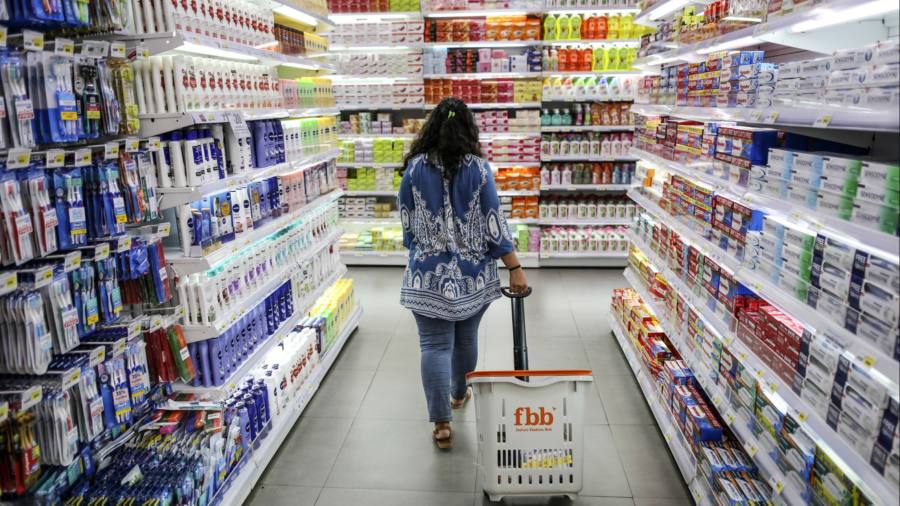India is now officially the world’s most populous nation, according to the UN, having surpassed China for the first time this year. But just how big a market is it?
Since the country began liberalising its economy more than three decades ago, companies — Indian and foreign — have been trying to puzzle out how many Indians make enough money to be categorised as middle class.
While estimates differ, all are a small fraction of the UN’s headline number of the more than 1.425bn people it now estimates live in India.
Some past estimates have put the number of middle-class people well below 100mn, suggesting India’s consuming classes are closer in size to those in one of south-east Asia or Europe’s midsize economies than China’s.
Many Indians do not earn enough money to pay income taxes, work outside the formal economy, or are exempted from taxes because they work in agriculture. In the 2021-22 fiscal year, only about 58mn individual returns were filed.
The country’s modest average income levels have spawned phenomena like “microinsurance” (policies with ultra-low premiums) or what is called the “sachet economy”: single-portion packets of things like cookies and shampoo.
The question of who India’s middle class are and what they want is a perennial one for companies in consumer goods, retail and other sectors trying to figure out how to sell them more toothpaste, streaming content or mobile phones.
In a country where consumption accounts for about 60 per cent of gross domestic product, the metric is relevant to anyone following India’s broader growth story too.
“The middle classes act as employers and employees, consumers and producers, and agents of political change,” says Rajesh Shukla, chief executive of People Research on India’s Consumer Economy (Price), a not-for-profit research firm based in Udaipur that conducts household income surveys. “They generate many of the new jobs that employ the growing workforce, besides paying for nearly half of all taxes.”
But getting solid data has historically proved tricky in India. The country’s National Council of Applied Economic Research conducted income surveys until 2004-05; more recently Price did three of its own.
Based on its own research, Shukla’s group estimates that there are about 432mn middle-class Indians — about one in every three people. The range of what Price ranks as middle class is large: household income of between 500,000 and 3,000,000 rupees (about $6,700 to $40,000) a year.
This is enough, says Shukla to “have achieved economic security and be able to indulge in discretionary consumption”.
Indian market researchers say they use such a broad definition because it mirrors the lowest and highest tax brackets for people who file taxes — and tax returns are a quantifiable set of data. They say India’s rollout of a goods and services tax and growing digitisation of the economy are bringing more people into the formal economy — and giving researchers trying to analyse the Indian consumer more hard data to work with, too.
Shiv Shivakumar, operating partner at private equity firm Advent International, extrapolates the size of the middle class starting from the number of income tax returns and an average household size of 4.4 people.
He then adds another 100mn to 200mn non-taxpaying people in agriculture (what he calls the top income layer of the nearly 1bn Indians who live on the land) and reaches an estimate of 356mn to 456mn people.
Shivakumar uses the same 500,000 to 3,000,000-rupee yearly household income definition of the middle class as Price’s Shukla. “If you look at India as a multinational, you might get disheartened by it: it’s 1.4bn people and ask, why is my business not bigger?” he says. “But a lot of progress has happened and more will happen.”
Another group that market researchers are watching are people just below the income rung of 500,000 rupees a year — what they call “aspirers” who might soon be moving into the middle class.
“Anyone who is looking at the Indian economy from the rear-view mirror is going to underestimate not just the quantity but also the quality of the changes in consumption that are coming in India,” says Nikhil Ojha, senior partner with Bain & Co.
“The biggest shift will be the move upward of the ‘aspirers’ into the middle class — people who buy not just more of the same, but also more premium and newer categories.”
Read the full article here




